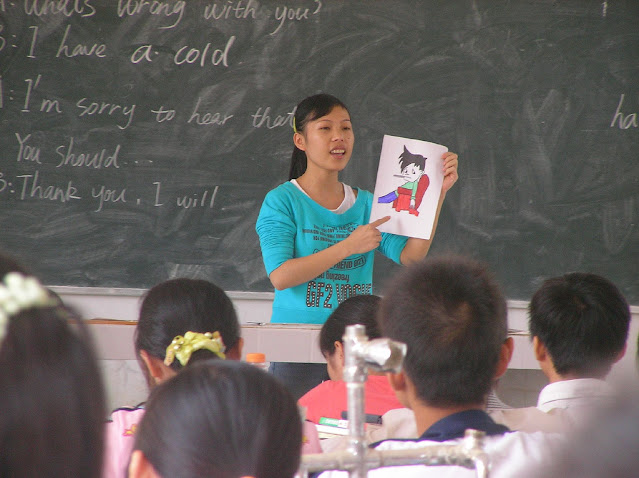Effective classroom management is a critical aspect of successful teaching, particularly in the unique context of Filipino education. With diverse classrooms, large class sizes, and varying student behaviors, Filipino teachers face specific challenges when it comes to maintaining order and creating a positive learning environment.
In this blog post, we will discuss practical and proven classroom management strategies that are particularly relevant to the Filipino education context. From establishing routines to managing large class sizes, dealing with common student behaviors, and promoting positive discipline, these strategies can help Filipino teachers effectively manage their classrooms and enhance student learning outcomes.

Establishing Routines
Establishing routines is a fundamental classroom management strategy that can greatly contribute to a well-organized and smoothly functioning classroom. In the Filipino education context, routines can help manage the diverse needs of students and provide structure to the learning environment. Here are some practical suggestions for establishing routines in your classroom:
- Start with a Daily Routine: Set clear expectations for students by establishing a daily routine that includes arrival procedures, morning routines, and transition times between activities. Communicate these routines to students and consistently reinforce them to help students develop a sense of predictability and familiarity in the classroom.
- Use Visual Aids: Utilize visual aids such as charts, posters, or signs to display the routines and procedures in the classroom. These visual aids can serve as reminders for students and help them follow the established routines independently.
- Teach and Reinforce Expectations: Explicitly teach and reinforce expectations for behavior during routines, such as lining up, entering and exiting the classroom, and transitioning between activities. Consistently reinforce these expectations through positive reinforcement and gentle reminders.
Managing Large Class Sizes
Filipino teachers often face the challenge of managing large class sizes, which can impact classroom management and student engagement. Here are some strategies that can help manage large class sizes effectively:
- Arrangement of Furniture: Arrange furniture in a way that promotes movement and accessibility. Avoid blocking pathways or overcrowding areas to ensure smooth transitions and minimize disruptions.
- Grouping Strategies: Utilize grouping strategies, such as cooperative learning or collaborative group work, to facilitate peer-to-peer interaction and student engagement. This can help manage the large class size and promote active participation among students.
- Use Attention-getting Signals: Use attention-getting signals, such as clapping or ringing a bell, to quickly gain students' attention and refocus the class. This can help manage disruptions and maintain an orderly classroom environment.
Dealing with Common Student Behaviors
Filipino teachers may encounter common student behaviors that require effective management to ensure a positive classroom environment. Here are some strategies for dealing with common student behaviors:
- Establish Clear Expectations: Set clear expectations for behavior from the beginning of the school year and consistently reinforce them. Communicate these expectations to students and involve them in creating classroom rules and consequences.
- Positive Reinforcement: Utilize positive reinforcement strategies, such as praise, rewards, and recognition, to encourage and reinforce positive behaviors. This can help motivate students to follow classroom rules and maintain good behavior.
- Proactive Classroom Management: Use proactive classroom management strategies, such as incorporating engaging lessons, providing opportunities for active participation, and addressing students' diverse learning needs. This can help prevent behavior problems before they arise and create a positive classroom environment.
Promoting Positive Discipline
Promoting positive discipline is an essential aspect of effective classroom management in the Filipino education context. Here are some strategies for promoting positive discipline in your classroom:
- Restorative Justice Approach: Adopt a restorative justice approach that focuses on repairing harm, restoring relationships, and promoting accountability. Use restorative practices, such as class meetings or circles, to address conflicts or misbehaviors in a constructive and non-punitive manner. This approach encourages students to take responsibility for their actions, understand the impact of their behavior on others, and work towards repairing the harm caused.
- Clear and Consistent Consequences: Establish clear and consistent consequences for misbehavior, and communicate them to students and parents. Ensure that consequences are fair, proportional, and aligned with the established classroom rules and expectations. Avoid using harsh or punitive measures that may damage the student-teacher relationship or create a negative classroom environment.
- Teach Self-Regulation Skills: Teach self-regulation skills to students, such as emotional regulation, impulse control, and problem-solving strategies. Provide opportunities for students to practice these skills in real-life situations, and offer support and guidance as needed. Building students' self-regulation skills can help prevent misbehavior and promote positive discipline in the classroom.
- Foster Positive Relationships: Build positive relationships with your students based on trust, respect, and empathy. Get to know your students as individuals, show genuine interest in their lives, and listen to their concerns. When students feel valued and heard, they are more likely to respect classroom rules and respond positively to discipline measures.
- Communicate with Parents and Guardians: Establish open and regular communication channels with parents and guardians to keep them informed about their child's behavior and progress in the classroom. Involve them in the discipline process by seeking their input, and collaborate with them to address any ongoing behavior issues. When parents and teachers work together, it can create a consistent and supportive approach to positive discipline.
Effective classroom management is essential for creating a conducive learning environment for students in the Filipino education context. By establishing routines, managing large class sizes, dealing with common student behaviors, and promoting positive discipline, Filipino teachers can effectively manage their classrooms and enhance student learning outcomes.
Remember to adopt a restorative justice approach, provide clear and consistent consequences, teach self-regulation skills, foster positive relationships, and communicate with parents and guardians to create a positive and inclusive classroom environment where all students can thrive. With these strategies in place, teachers can create a positive classroom culture that promotes academic success and personal growth for all students.
